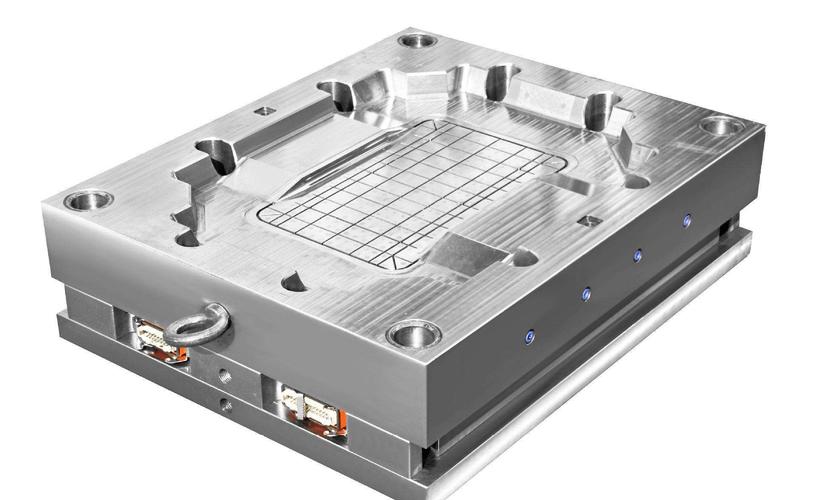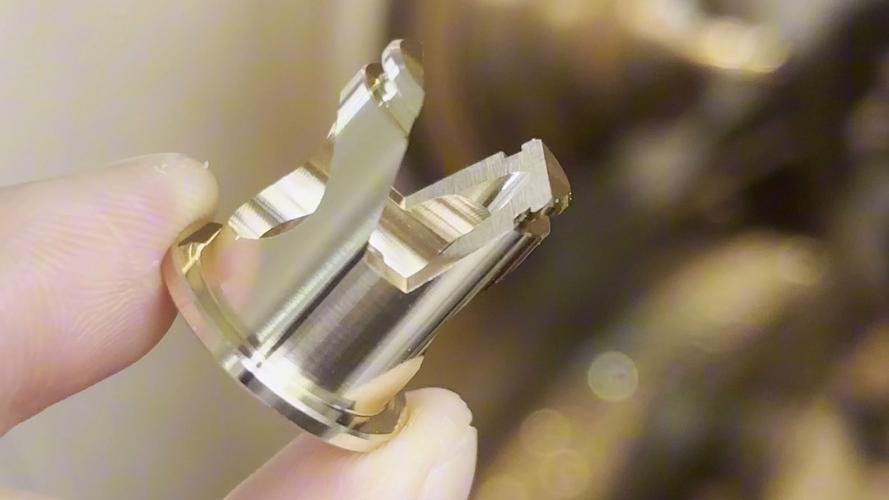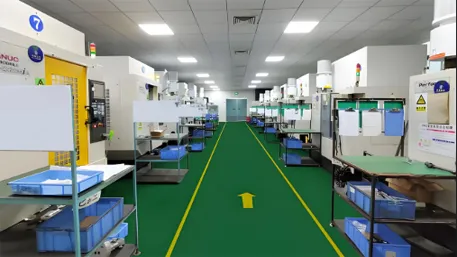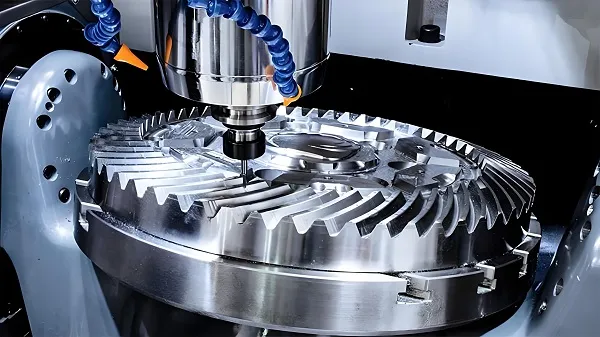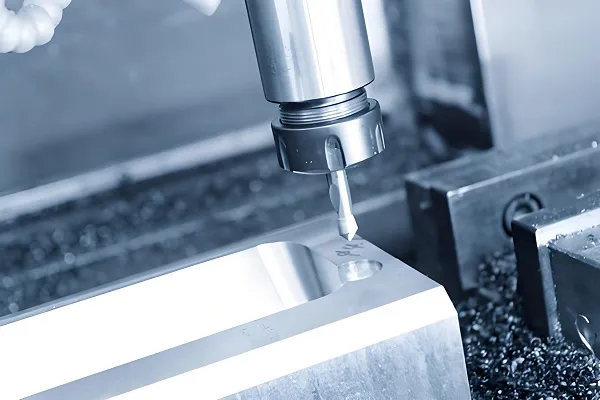In numerous industrial fields such as petrochemical, machinery manufacturing, and aerospace, stainless – steel flange shafts, as crucial connection and transmission components, their quality directly impacts the stable operation, service life, and production safety of equipment. With the manufacturing industry advancing towards high – precision and high – performance directions, CNC (Computer Numerical Control) processing technology, with its outstanding precision manufacturing capabilities and flexible customization features, has become an important technical guarantee for producing high – quality stainless – steel flange shafts. This article will systematically analyze the technical principles and practical value of custom CNC stainless – steel flange shafts from multiple aspects, including technical advantages, material selection, processing technology, quality control, and industry applications.
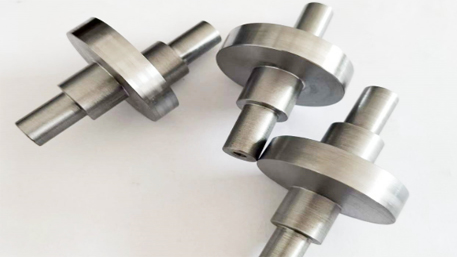
I. Core Advantages of CNC Technology in Customizing Stainless – Steel Flange Shafts
- High – precision Assurance
The positioning accuracy of CNC machine tools can reach ±0.005mm, the repeat positioning accuracy is ±0.01mm, and the surface roughness Ra≤0.4μm. When manufacturing stainless – steel flange shafts for precision machinery, the diameter tolerance of the shaft can be controlled within ±0.005mm, ensuring precise matching between the shaft and components such as bearings and couplings. This effectively reduces vibration and noise during equipment operation and extends the service life of the equipment. - Complex – structure Machining Ability
Five – axis CNC equipment can complete the machining of complex structures that are difficult to achieve with traditional processes, such as flange shafts with irregular flanges, spiral grooves, and stepped shafts. Taking the irregular flange shaft used in aerospace equipment as an example, five – axis milling can complete the machining of the complex shape in one go, avoiding errors caused by multi – process machining and greatly improving production efficiency and product quality. - Adaptability of Materials and Processes
CNC technology is highly compatible with various stainless – steel materials such as 304, 316L, and 420. For the good comprehensive performance of 304 stainless steel, high – speed cutting (HSC) technology can be adopted during processing. The rotational speed can be set to 10000r/min, and the feed rate to 1500mm/min. This not only improves processing efficiency but also effectively reduces the impact of cutting heat on the material, ensuring the dimensional stability of shaft – type parts.
II. Material Selection and Strategies for Customizing Stainless – Steel Flange Shafts
- Balancing Corrosion Resistance and Strength
- 304 stainless steel: With a density of 7.93g/cm³ and a tensile strength of ≥515MPa, it has good corrosion resistance and processing performance, and relatively low cost. It is widely used in the manufacture of flange shafts in general industrial environments, such as mechanical transmission equipment and ordinary pipeline connections.
- 316L stainless steel: With a density of 7.98g/cm³ and a tensile strength of ≥485MPa, due to the presence of molybdenum element, its corrosion resistance, especially resistance to chloride – ion corrosion, is significantly better than that of 304 stainless steel. It is suitable for fields with high requirements for corrosion resistance, such as marine engineering and chemical equipment.
- 420 stainless steel: With a density of 7.75g/cm³, after heat treatment, its hardness can reach above HRC50. It has high strength and wear resistance and is often used in occasions with high requirements for wear resistance, such as pump shafts and tool shafts.
- Special Function Requirements
- High – temperature environment: For flange shafts working in high – temperature environments, 310S stainless steel can be selected. Its maximum service temperature can reach 1200℃, and it has good oxidation resistance and high – temperature strength.
- Food and medical industries: 316L stainless steel, due to its excellent biocompatibility, meets food hygiene and medical standards and becomes an ideal material for flange shafts in food processing equipment and medical devices.
- Cost – performance Optimization
When mass – producing products that are sensitive to cost, 304 stainless steel can be selected. By optimizing the CNC processing technology, the production cost can be reduced while ensuring product performance. For high – end customized products or flange shafts used in harsh environments, high – performance stainless steels such as 316L and 420 can better meet the requirements, improving product reliability and service life.
III. Analysis and Innovation of CNC Processing Technology
- Multi – axis Linkage Composite Machining
Five – axis milling can complete the machining of the complex outer shape of the flange shaft in one clamping, such as flanges with inclined holes and irregular contours. The processing efficiency is 60% higher than that of traditional processes, and the surface roughness Ra≤0.4μm, significantly improving the appearance quality and dimensional accuracy of the product. Four – axis processing can achieve multi – angle slotting and drilling of the shaft body to ensure the precise formation of the internal structure. - High – speed Cutting and Precision Molding
When processing stainless – steel flange shafts, high – speed cutting (HSC) technology can greatly improve processing efficiency. At the same time, processes such as layered milling and cooling lubrication are adopted to effectively reduce material deformation and tool wear caused by cutting heat. When performing precision engraving or molding, by optimizing the tool path and cutting parameters, defects such as burrs and cracks on the material surface can be avoided to ensure product quality. - Strengthening of Surface Treatment Processes
Passivation treatment of stainless – steel flange shafts can form a dense oxide film on their surface, improving corrosion resistance. For flange shafts with special requirements, surface treatments such as chrome – plating and nickel – plating can also be carried out to enhance their wear resistance and decorative properties. In addition, shot – peening treatment can improve the fatigue strength of the shaft surface.
IV. Quality Control System for Customizing Stainless – Steel Flange Shafts
- Dimension and Geometric Tolerance Detection
Use a coordinate measuring machine (CMM) to perform a full – size scan of the product, detect key dimensions such as shaft diameter, flange outer diameter, and bolt – hole position, and ensure that the dimensional tolerance is controlled within ±0.005mm. At the same time, detect geometric tolerances such as cylindricity ≤ 0.003mm and perpendicularity ≤ 0.02mm to ensure the assembly accuracy and operation stability of the flange shaft. - Material and Mechanical Property Verification
Determine the composition of the stainless steel through spectral analysis to ensure that it meets the corresponding standard requirements. For example, the content of each alloy element in 316L stainless steel is within the specified range. Conduct mechanical property tests such as tensile tests, hardness tests, and impact toughness tests to verify whether the strength, hardness, and toughness of the material meet the design requirements. For example, the tensile strength of 304 stainless steel is ≥515MPa. - Surface Quality and Function Detection
Use a roughness tester to detect the surface roughness of the flange shaft to ensure that the designed Ra value is achieved. Conduct salt – spray tests and wear – resistance tests on the surface – treated flange shaft to evaluate its corrosion resistance and wear resistance. In addition, for flange shafts with dynamic – balance requirements, conduct dynamic – balance tests to ensure the stability of the equipment during high – speed rotation.
V. Industry Application Practices
- Petrochemical Industry
In petrochemical equipment, 316L stainless – steel flange shafts, with their excellent corrosion resistance, are widely used in equipment such as pumps, compressors, and valves. For example, the pump shaft of a chemical centrifugal pump uses a custom CNC 316L stainless – steel flange shaft. After precision processing and surface treatment, it can operate stably in strongly corrosive media, effectively extending the equipment’s maintenance cycle and reducing production costs. - Machinery Manufacturing
In the machinery – manufacturing field, 304 stainless – steel flange shafts are commonly used in various transmission equipment, such as reducers and conveyor belts. Custom – CNC – processed flange shafts can be individually designed according to the special requirements of the equipment, ensuring perfect matching between the shaft and other components and improving the transmission efficiency and stability of the equipment. - Aerospace Industry
In the aerospace field, the performance requirements for components are extremely high. 420 stainless – steel flange shafts, after CNC precision processing and heat treatment, have high strength, high wear resistance, and good dimensional stability. They can meet the requirements of key components such as aircraft engines and aircraft landing gear, ensuring flight safety while reducing equipment weight and improving the performance of aerospace vehicles.
VI. Frequently Asked Questions (FAQ)
- What level of precision can custom CNC stainless – steel flange shafts achieve?
CNC processing can achieve a dimensional tolerance of ±0.005mm, a repeat positioning accuracy of ±0.01mm, and a surface roughness of Ra≤0.4μm, meeting the requirements of various high – precision equipment. - How to choose the appropriate stainless – steel material?
It is necessary to choose according to the product’s usage environment, performance requirements, and cost budget. For example, in a general industrial environment, 304 stainless steel can be selected; in a corrosive environment, 316L stainless steel can be selected; for occasions with high requirements for wear resistance, 420 stainless steel can be selected. - How long is the production cycle for customizing stainless – steel flange shafts?
The production cycle depends on the complexity of the flange shaft and the material. Simple flange shafts usually take 5 – 7 days to complete, while complex flange shafts may take 10 – 15 days. We also provide urgent customization services to meet customers’ urgent needs. - Can CNC processing achieve personalized design?
Certainly, CNC technology can accurately achieve various complex shapes and structures according to the customer’s design drawings, meeting the customer’s personalized customization needs. - What is the cost of customizing stainless – steel flange shafts?
The cost is affected by factors such as materials, processing complexity, precision requirements, and order quantity. The cost of small – batch customization is relatively high, but through process optimization and large – scale production, the unit cost can be effectively reduced.
VII. Customer Reviews
“In the machinery – manufacturing industry, the stainless – steel flange shafts customized by your company perform outstandingly. Not only do they have high dimensional accuracy, but also good surface quality and excellent compatibility with other components. The production cycle is short, and the service response speed is fast, providing strong support for our production.” – [Person in charge of a certain machinery – manufacturing enterprise]
Whether you are a petrochemical enterprise, a machinery – manufacturing manufacturer, or an enterprise in the aerospace field, our professional team will rely on the high – precision advantages of CNC technology, combined with stainless – steel material engineering and process innovation, to provide you with a full – process customization service from design, processing to inspection. Click to leave a message, and let us work together to create high – quality stainless – steel flange shafts, helping your enterprise gain a competitive edge in the market!

